Imagine volume-based indicators as a compass guiding you through the dense forest of market fluctuations. With these top 10 tips in your arsenal, navigating the intricate world of trading becomes more manageable and potentially more lucrative.
Each tip is designed to help you decipher the language of volume signals, pinpointing opportunities that might otherwise go unnoticed. From understanding the nuances of On Balance Volume to maximizing the power of Accumulation/Distribution Line, these strategies hold the key to unlocking a deeper understanding of market dynamics and enhancing your trading prowess.
Understanding Volume-Based Indicators
To grasp the significance of volume-based indicators in trading, one must comprehend their role in evaluating market dynamics. Volume indicators such as On-Balance Volume (OBV), Money Flow Index (MFI), Market Facilitation Index (MFI), and Chaikin Money Flow play a crucial role in analyzing buying and selling pressure, price effectiveness, and institutional accumulation and distribution.
These indicators are essential for confirming breakout strength and identifying potential trend reversals. By monitoring the volume along with these indicators, traders can gain insights into market movements and make informed decisions. Understanding how to utilize OBV, MFI, and CMF can enhance your trading strategies, improve risk management, and ultimately increase your chances of success in the market.
Importance of Volume Analysis
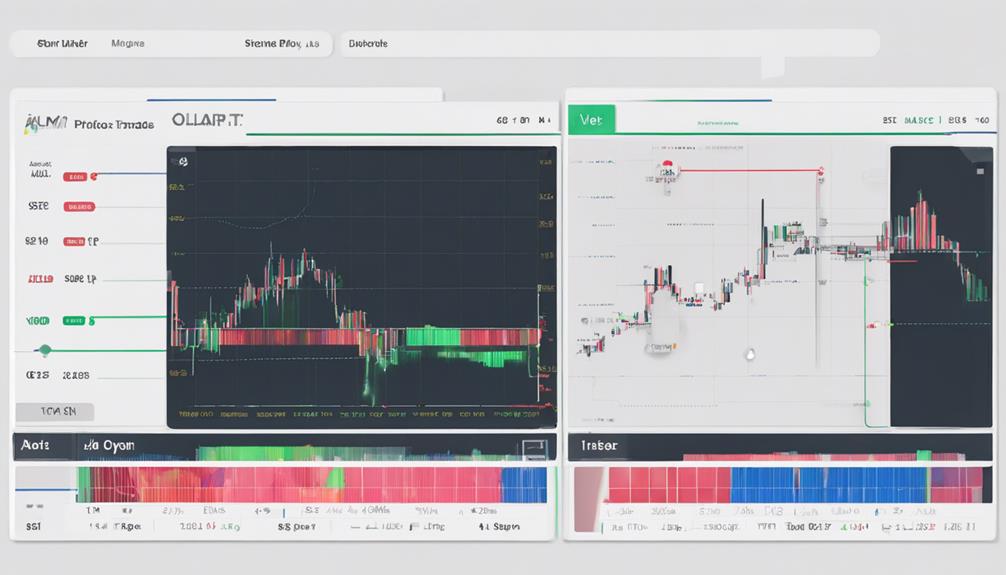
Volume analysis serves as a critical market signal, providing insights into the strength or weakness of price movements. By interpreting volume patterns, traders can identify trends and anticipate potential market shifts before they occur.
Understanding the importance of volume analysis is key to making informed decisions and staying ahead in the trading game.
Volume as Market Signal
Analyzing the volume in trading provides valuable insights into market sentiment, strength, and potential price movements based on the volume of shares or contracts traded. Volume is an indicator that measures the level of activity in the market, helping traders identify potential reversals and trends.
Incorporating volume into your analysis is an important factor to consider when developing effective volume trading strategies. By understanding market sentiment through volume analysis, traders can make more informed decisions and improve their profitability.
Volume analysis provides traders with valuable insights into market dynamics, helping them cut through the noise and visualize trading activity. Utilizing volume as a market signal is key to interpreting market movements accurately and enhancing trading outcomes.
Interpreting Volume Patterns
Interpreting volume patterns is essential for gaining insights into market sentiment and predicting potential price movements effectively. When delving into volume analysis, understanding the interplay between volume and price action is crucial for making informed trading decisions.
Utilizing volume indicators such as the OBV indicator, CMF indicator, and A/D lines can offer valuable insights into market trends and movements. Analyzing volume aids in deciphering market intentions in common day trading setups like breakouts and trending stocks.
Moreover, employing advanced volume analysis techniques allows for the assessment of strength in equities and bitcoin markets, providing a comprehensive view of the underlying market sentiment and facilitating more informed trading decisions.
Using Volume for Trend Confirmation
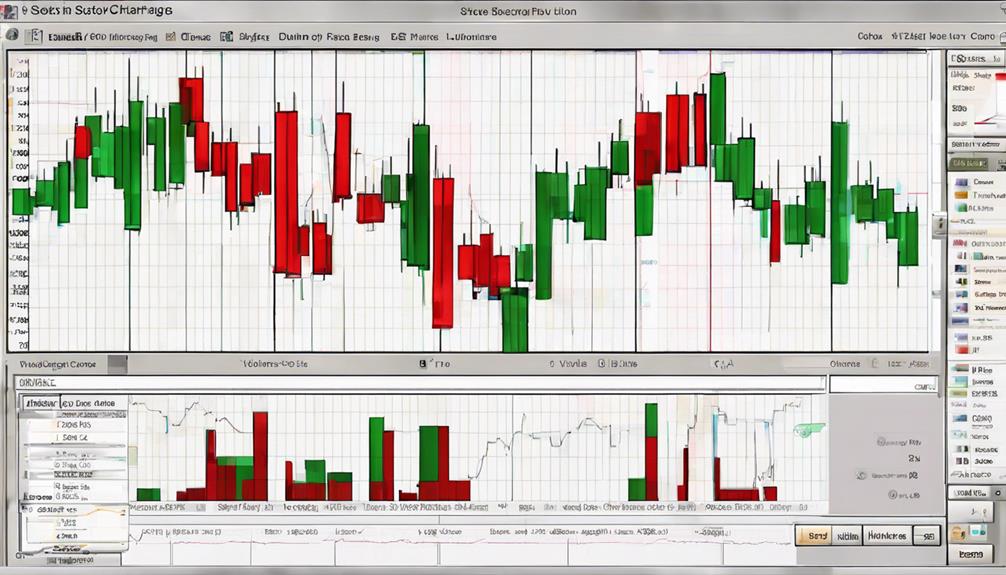
To confirm trends effectively, traders should assess volume alongside price movements for validation of strength and potential continuation signals. Volume plays a crucial role in trend confirmation, as it indicates the level of market participation and the intensity of buying or selling pressure.
During an uptrend, increasing volume validates the upward price movement, suggesting a strong trend that's likely to continue. Conversely, in a downtrend, decreasing volume may signal weakening momentum and a potential trend reversal.
Leveraging Volume for Breakouts
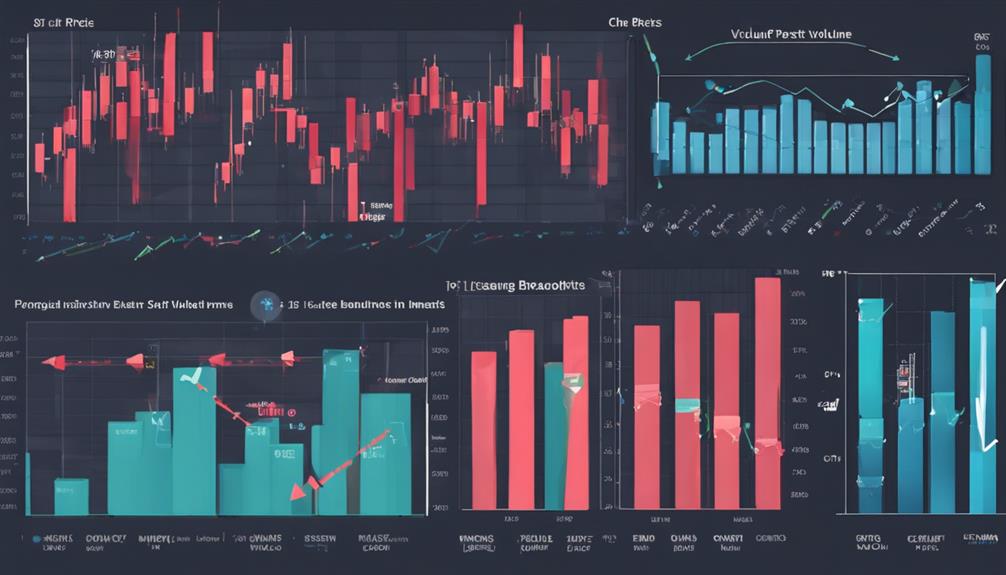
Breakout trading strategies leverage volume dynamics to confirm the strength of potential price movements. When utilizing volume for breakouts, consider the following:
- Look for volume confirmation to validate the strength of the trend.
- Identify breakout opportunities by monitoring significant volume spikes alongside price movement.
- Increased market interest, indicated by volume surges during breakouts, suggests potential continuation of the trend.
- Utilize volume analysis to improve trading accuracy and avoid false breakouts.
- Set entry and exit points based on volume dynamics to enhance the probability of successful breakout trades.
Volume Indicators for Buy/Sell Signals
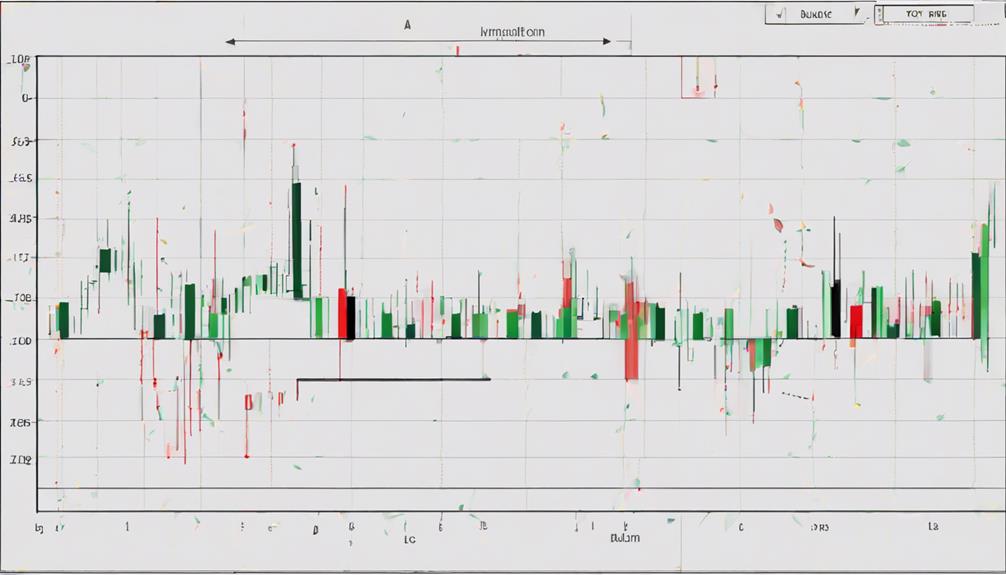
When analyzing volume indicators for buy/sell signals, consider incorporating On Balance Volume (OBV) and Money Flow Index (MFI) to enhance your trading strategies. These indicators analyze trading volume and price movements to generate signals.
Chaikin Money Flow (CMF) crossing above or below the zero line can indicate buying or selling pressure, offering clear buy/sell signals. Volume-Weighted Average Price (VWAP) helps identify optimal buy/sell levels based on average price and volume.
Additionally, Positive Volume Index (PVI) and Negative Volume Index (NVI) adjust the impact of trading volume to provide accurate buy/sell signals. By combining volume analysis with price action, traders can make more informed decisions and improve the accuracy of buy/sell signals based on volume indicators.
Trading Volume Spikes Effectively
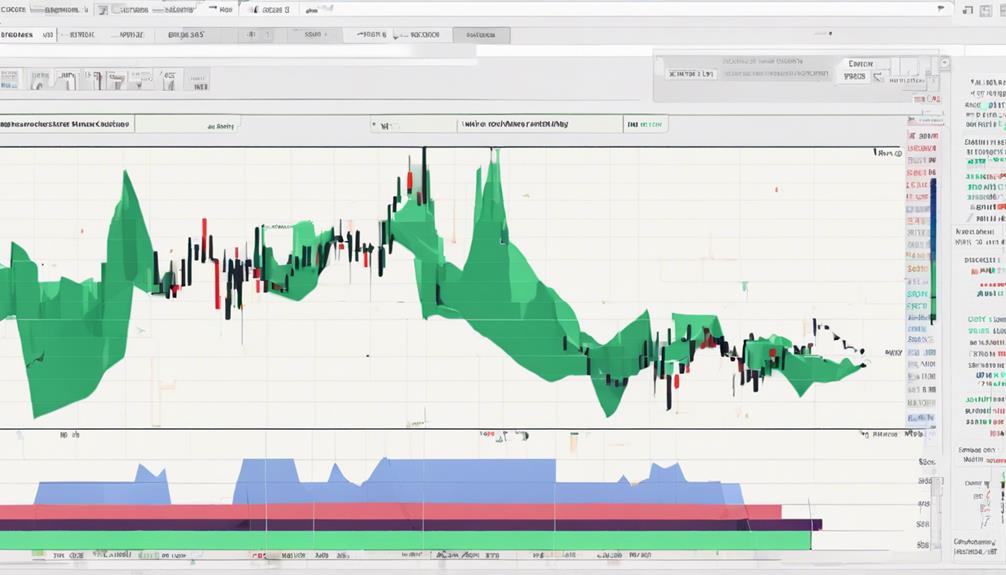
When trading, recognizing volume spikes can offer valuable insights into market activity.
By understanding how to interpret these spikes, you can better anticipate potential price movements.
Utilizing volume analysis effectively can help you make informed decisions and capitalize on trading opportunities.
Identifying Volume Spikes
Identifying volume spikes in trading can provide crucial insights into market activity and potential trading opportunities. When it comes to trading volume spikes effectively, consider the following:
- Signaling Trend Reversals: Volume spikes indicate potential trend reversals, helping you stay ahead of market shifts.
- Spotting Market Activity: Identifying volume spikes allows you to pinpoint significant market activity and make informed decisions.
- News Events Impact: Volume spikes often coincide with news events or earnings reports, influencing trading volume and price movements.
- Confirming Trend Strength: Monitoring volume spikes can help confirm the strength of a trend or signal a possible trend reversal.
- Enhancing Risk Management: Utilizing volume spike analysis can improve trading decisions and enhance risk management strategies effectively.
Interpreting Price Movements
Interpreting price movements during trading volume spikes is crucial for identifying potential trend reversals and making informed trading decisions. Volume spikes often accompany sharp price movements, indicating increased market activity and potential turning points.
Understanding how to interpret volume spikes effectively can provide valuable insights into market sentiment and potential price direction changes. By monitoring volume spikes, traders can gain a better understanding of market dynamics and improve their decision-making process.
These spikes are typically triggered by significant news events or institutional trading activity, making them essential indicators for traders seeking to stay ahead of market trends and make strategic moves based on real-time data.
Using Volume Analysis
Wondering how to effectively utilize volume spikes in your trading strategy for optimal results? When it comes to volume analysis, understanding how to interpret volume spikes can be crucial for traders. Here are some key tips to help you navigate volume spikes effectively:
- Volume spikes in trading often indicate sharp price moves and potential trend reversals.
- Analyzing volume spikes can help traders identify significant market activity and potential trading opportunities.
- Volume spikes are commonly seen alongside news events, earnings reports, or other market-moving catalysts.
- Traders can use volume spikes to confirm breakouts, assess market interest, and anticipate price movements.
- Monitoring volume spikes provides valuable insights into market sentiment, liquidity, and shifts in supply and demand dynamics.
Chaikin Money Flow Vs. Standard Volume
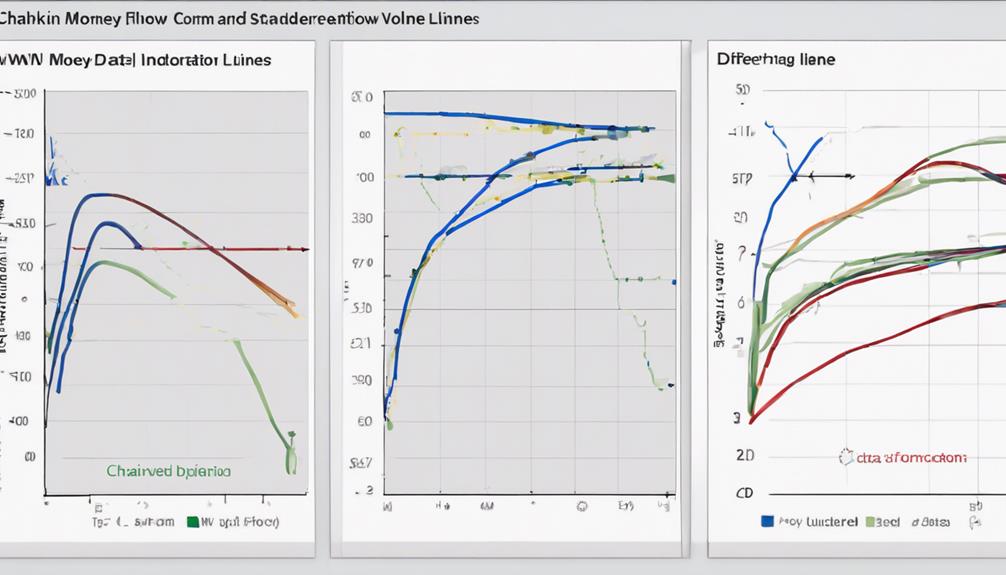
When comparing Chaikin Money Flow (CMF) to standard volume, it becomes evident that CMF provides a more nuanced perspective on volume dynamics and market sentiment.
While standard volume simply measures the total number of shares or contracts traded, CMF analyzes buying and selling pressure, focusing on the accumulation and distribution of volume relative to price movements.
CMF is instrumental in identifying market trends, confirming breakout strength, and detecting potential trend reversals driven by institutional buying or selling pressure.
Unlike standard volume indicators, CMF offers a deeper insight into volume dynamics, providing valuable information for traders to interpret market sentiment effectively and anticipate potential price movements.
Understanding the differences between these two volume indicators can significantly enhance your ability to make informed trading decisions based on volume analysis.
Calculating Chaikin Money Flow
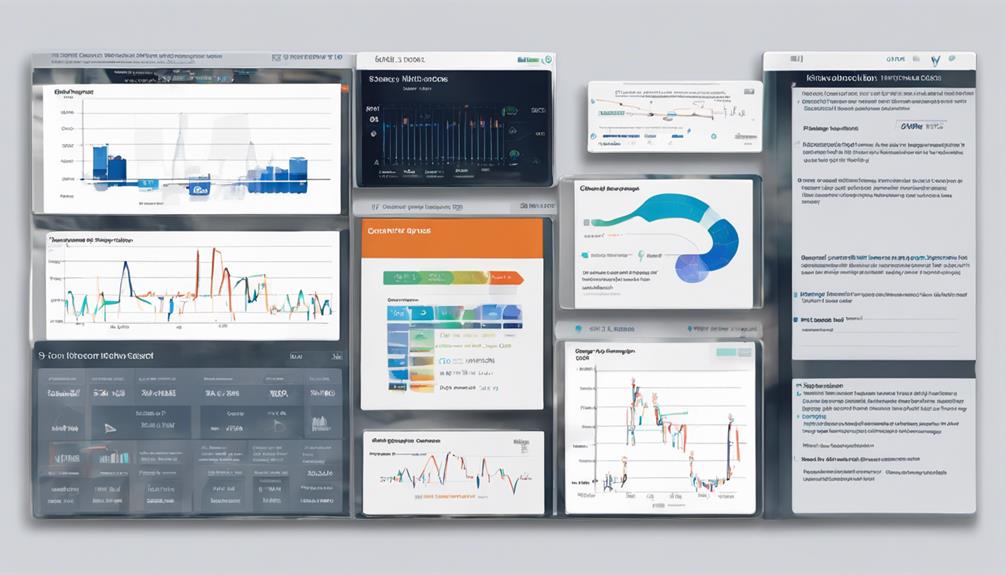
To calculate Chaikin Money Flow (CMF), you sum the accumulation/distribution flow over a specific period. CMF is a volume-based indicator that helps determine buying and selling pressure in the market.
- CMF uses both price and volume to assess market dynamics.
- Positive CMF values signify buying pressure, while negative values indicate selling pressure.
- Readings above zero on the CMF suggest accumulation, while below zero imply distribution.
- Crossing the zero line on the CMF can signal possible trend reversals.
- CMF is a valuable tool for traders to gauge market sentiment and potential shifts in price direction.
Optimal Settings for CMF
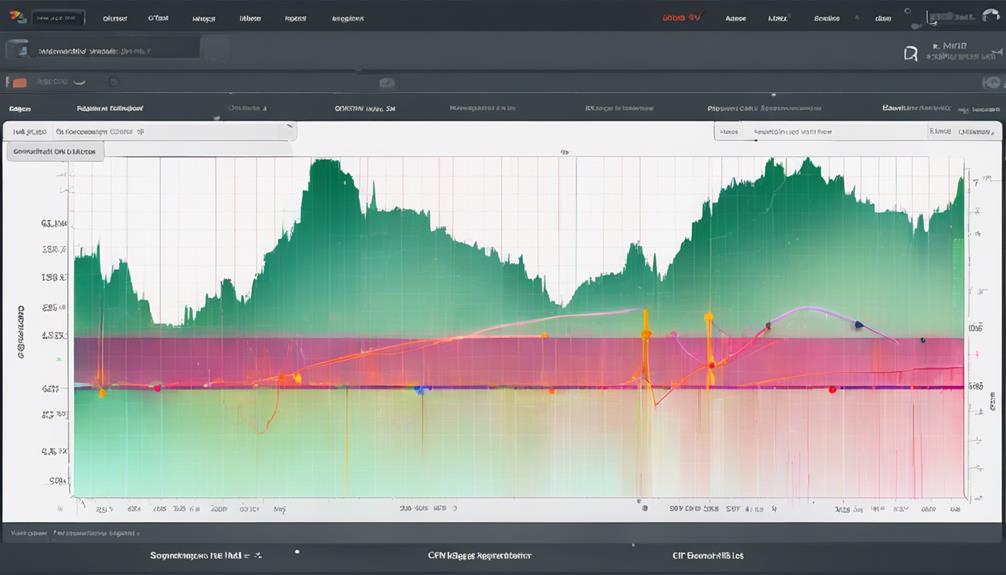
When setting up the Chaikin Money Flow (CMF) indicator, considering the optimal period selection can enhance your analysis accuracy.
Understanding how to interpret signals generated by CMF, especially in relation to the 0.1 threshold, is crucial for identifying buying and selling pressure effectively.
Additionally, leveraging the CMF indicator in conjunction with other technical indicators can provide a comprehensive view of market trends and potential trade opportunities.
CMF Period Selection
In selecting the optimal CMF period setting for your trading strategy, it's crucial to balance sensitivity and reliability to accurately gauge institutional buying and selling pressure.
When considering CMF period selection, keep in mind the following:
- Common period settings include 20, 21, or 22 days.
- Shorter periods offer more timely signals but may introduce noise.
- Longer periods like 50 days provide smoother signals but can lag behind market movements.
- Experiment with different settings to find the right balance for your style and risk tolerance.
- Adapt CMF periods based on market conditions and asset volatility to enhance effectiveness in identifying accumulation or distribution phases.
Interpretation of Signals
As you navigate the realm of interpreting signals, particularly focusing on optimal settings for Chaikin Money Flow (CMF), understanding the significance of the 20-day period with a 0.15 line as a signal threshold becomes paramount.
CMF above 0.15 indicates strong buying pressure, while values below -0.15 suggest significant selling pressure. Crossing the zero line on the CMF can signal potential trend reversals.
Combining With Other Indicators
How can volume-based indicators like Chaikin Money Flow (CMF) be optimized when combined with other technical indicators for trading efficiency? When fine-tuning CMF to work harmoniously with other indicators, consider the following:
- Optimal settings for CMF often involve a period of 20 days.
- Experiment with different CMF periods to gauge buying and selling pressure accurately.
- Adjusting CMF settings can yield diverse signals for trends and reversals.
- Finding the right CMF configuration aligns with your trading strategy and preferences.
- By understanding how to tweak CMF effectively, you can enhance trend confirmation and reversal identification in making well-informed trading decisions.
Benefits of Using Volume Indicators
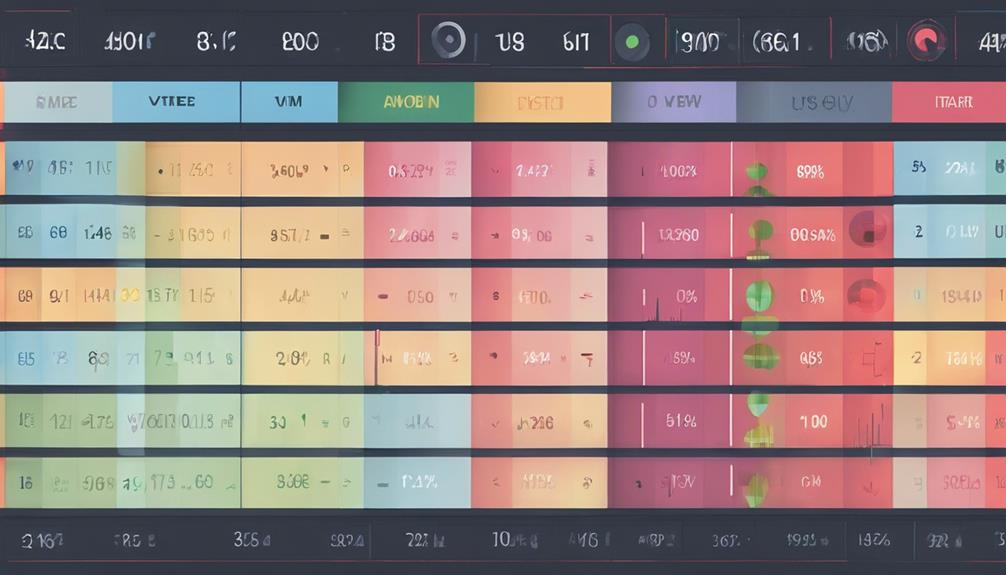
When incorporating volume indicators like On Balance Volume (OBV) and Money Flow Index (MFI) into your trading analysis, the benefits become evident in assessing market dynamics. These indicators offer insights into market trends by analyzing volume trends, helping you develop a robust volume trading strategy.
By understanding volume activity, you can gauge the strength of a trend, identify false breakouts, and anticipate potential trend reversals. Additionally, incorporating Chaikin Money Flow (CMF) can provide valuable information on institutional accumulation-distribution, aiding in decision-making when looking to buy stocks.
Utilizing volume indicators not only confirms breakout opportunities but also improves risk management and enhances your overall trading odds.
How Can Volume-Based Indicators Help in Leveraging Trading Strategies?
Volume-based indicators provide valuable insights into market trends and price movements. By analyzing the trading volume, investors can gauge the strength of a trend and identify potential reversals. Tips for volume indicators include using them in conjunction with other technical analysis tools to confirm trading signals and leverage profitable strategies.
Frequently Asked Questions
What Is the Best Indicator Based on Volume?
The best indicator based on volume is the Chaikin Money Flow (CMF). Its ability to measure buying and selling pressure through zero line crossovers makes it invaluable for confirming trends, spotting reversals, and gauging breakout strength.
What Is the 10 Day Average Volume Indicator?
The 10 Day Average Volume Indicator calculates average trading volume over 10 days. It helps gauge volume levels, spot potential trading opportunities, and confirm breakouts. By comparing current volume to the average, traders can make informed decisions.
What Is the Tick Volume Strategy?
To implement the tick volume strategy in Forex, study price change frequency within a set timeframe. Observe how tick volume reflects market activity, aiding trend confirmation and reversal identification. Utilize tick volume patterns for informed trading decisions and risk management.
Which Indicator Is Most Profitable?
When using volume-based indicators, the Money Flow Index (MFI) stands out as the most profitable choice. It combines price and volume data effectively, offering clear signals for potential entry and exit points.
Conclusion
In conclusion, incorporating volume-based indicators into your trading strategy can provide valuable insights and improve decision-making. By analyzing volume trends and signals, you can better understand market dynamics and anticipate price movements.
So, ask yourself: How can leveraging volume indicators enhance your trading success and maximize profitability? Stay informed, stay ahead, and leverage the power of volume analysis in your trading journey.
